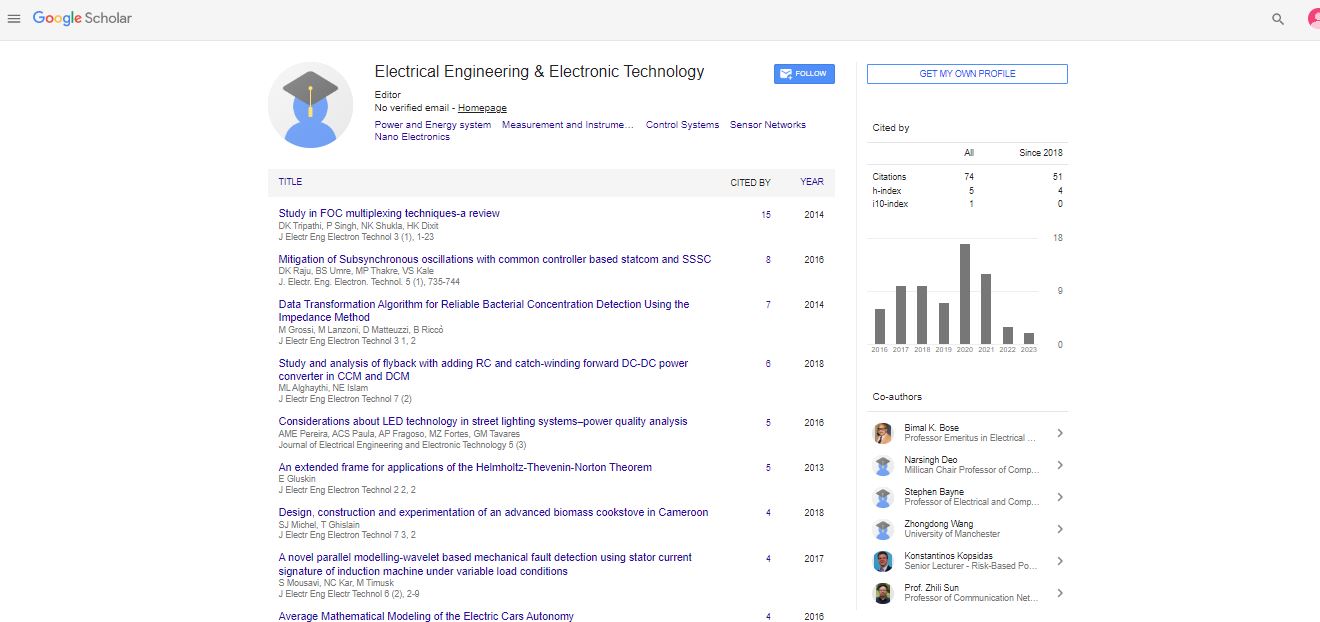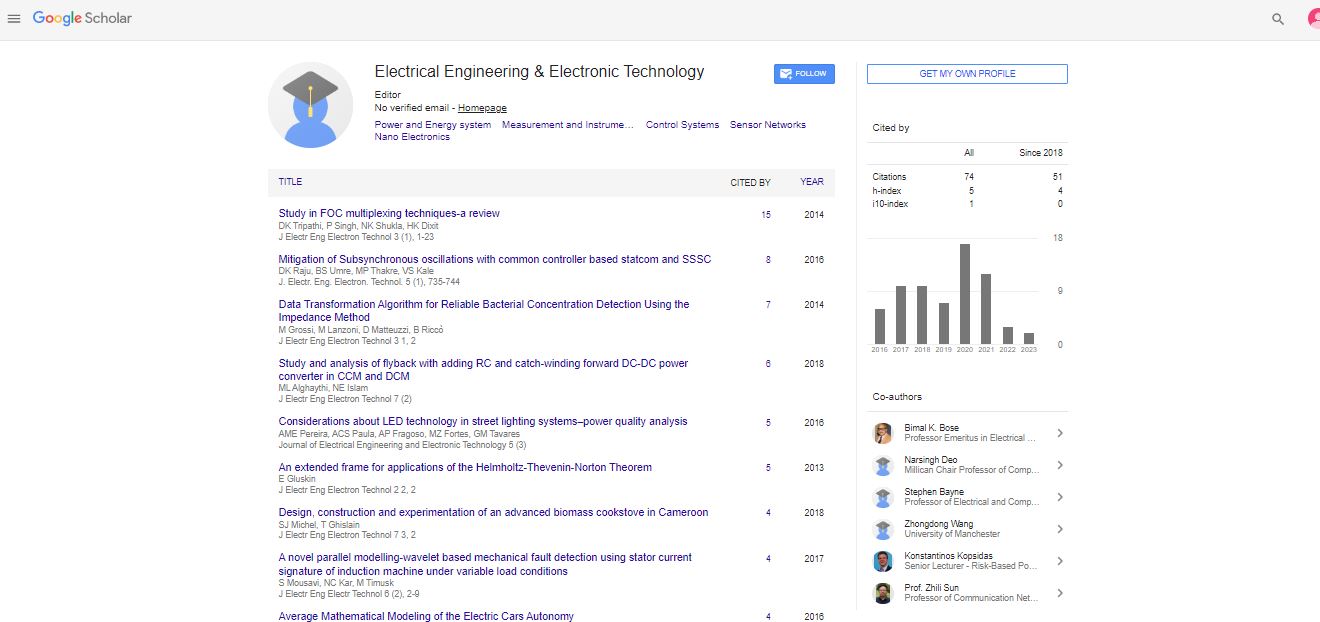Divergence controlled ultrasonic transmitter array for 3-dimensional long range imaging system in air
Sahdev Kumar
Aichi Institute of Technology, Japan
: J Electr Eng Electron Technol
Abstract
Ultrasonic sensing techniques are widely used in the various scientific ultrasonic instruments using sophisticated software for various non-destructive industrial and medical applications, owing to its propagation in all kinds of medium including solids, liquids and gases except vacuum. There are many applications using ultrasonic sound in air, such as distance measurement and range imaging etc. at low cost. However, the main disadvantage is its short measurable range due to the large absorption of the ultrasonic sound in air. Another disadvantage is its bigger size. It consists of an array receiver and due to the large interelement spacing, grating lobes appears that creates ghost images of the object. Therefore, it was the main difficulty to make it a practical product. However, because of a recent progress of Micro Electro Mechanical Systems (MEMS) technologies, it became possible to make a very small microphone array with many elements in a very small area. To extend the measurable range, some approaches were reported such as; high power sound source using spark discharge, using large scale transmitter elements and improving the signal to noise ratio (SNR) through pulse compression technique etc. In this paper, I have proposed a usage of high power ultrasonic phased array transmitter and ultrasonic array receiver using MEMS microphones for a longrange ultrasonic imaging system. The characteristics of the transmitter on the number of elements, modulated pulse width, etc. are investigated theoretically as well as experimentally. An ultrasonic array transmitter consisting of 144 (12 × 12) elements is constructed. It is controlled by four FPGAs and approximately 30 dB higher sound pressure level has been obtained than that of the single transmitter. The positions of the object are measured by delay-and-sum operations on the reflected received signal. The performance of the imaging system is compared with the system using a single transmitter. The improved 3D measurement field of an object by controlling the divergence of the ultrasonic transmitting array to improve the view angle of the system is shown. In isotropic divergence controlled system, the applied divergence is equal in both; x and y planes. In some applications a wide horizontal and narrow vertical measuring field is required. Therefore, I proposed an anisotropic divergence control system in which horizontal and the vertical divergence angles can be controlled independently. I described the principle of the anisotropic divergence control of the PAT and confirm it by numerical simulations. The anisotropic divergence of the transmitter was successfully controlled. Although, the sound pressure when the divergence was controlled 20o × 5o was about 6 dB lower than that of the PAT in phase and, 10 dB higher than the isotropic divergence controlled system and 26 dB higher than the single transmitter. The measurable range of the system with anisotropic divergence control has been improved over the isotropic divergence control by >2 m. The developed system can accurately detect the object while locating it at different positions. The maximum measurable range is > 25 m without any divergence. The developed system is useful in natural interferences e.g., smoke, fog, darkness etc. to make it a unique and novel ultrasonic long range imaging and the measurement system.
Biography
Sahdev Kumar has his expertise in evaluation and passion in improving the ultrasonic range sensing. The developed high power ultrasonic transmitter based on novel array elements generates ultrasonic beam to enhance its sensing range up to more than 25 m. He has designed and built this novel ultrasonic array transmitter after twenty years of experience in research and development in Indian Air Force including Aichi Institute of Technology, Toyota, Japan under the guidance of Professor (Dr) Hideo Furuhashi.
E-mail: kumarsahdev42@gmail.com
 Spanish
Spanish  Chinese
Chinese  Russian
Russian  German
German  French
French  Japanese
Japanese  Portuguese
Portuguese  Hindi
Hindi 
